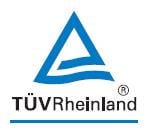
On 12 March 2018, the International Organizations for Standardization published an entirely new standard, ISO 45001, which outright replaces and supersedes OHSAS 18001. Here's what you need to know.
Similar to most standard transitions across the ISO landscape, there will be a three-year transition period for conversion to ISO 45001, making the transition deadline 11 March 11 2021, based on the initial publication date.
ISO 45001 borrows from upstream updates to ISO 9001, which engender a more proactive approach to risk control. In this way, 45001 leaves the more reactive approach of OHSAS 18001 behind. One can most clearly see this outdated feature in 18001 's reliance on delegating tasks like hazard control to safety management personnel, rather than integrating the responsibilities into the overall management system of the company. This is a key change of pace.
How Will ISO 45001 Affect Safety Leaders?
The new standard also focuses much more intently on managerial ownership, with commitment from top management being central to the standard's effectiveness and integration. It all starts by incorporating employee health and safety mechanisms into the overall management system, and members of an organisation's C-Suite will be compelled to play an active role to ensure the protection of their workers, as well as performance improvements, under the new ISO 45001.
By the same token, ISO 45001 provides broader latitude for workers themselves to implement and continuously improve an organisation's safety management system (SMS). Under the standard, employees will be trained and educated to spot safety risks and participate in remediation activities. With ISO 45001, safety management more clearly belongs to everyone in the organisation.
Benefits of ISO:45001:2018 Certification
- Demonstrate commitment to occupational health and safety with an internationally recognised certificate, securing a competitive advantage among interested parties
- Increase safety awareness and engagement among employees
- Systematically reduce occupational hazard incidents
- Prevent business disruptions and unnecessary downtime
- Improve your brand image among clients, authorities, and investors
- Increase confidence in the fulfilment of legal and other compliance requirements
- Achieve closer alignment with other ISO standards and business systems, streamlining both inter- and intra-organisation communication
Speak to our safety and certification experts for more information on how you can transition smoothly from OHSAS 18001 to ISO 45001:



